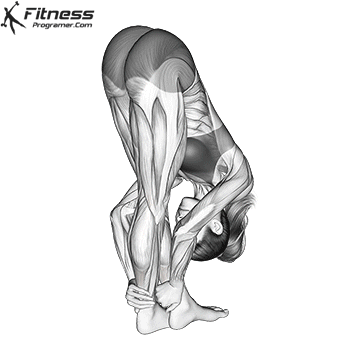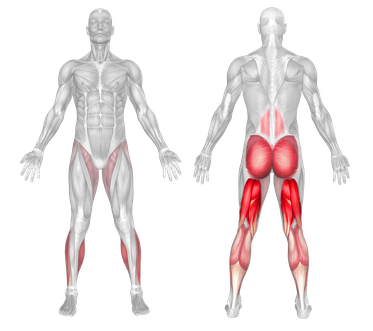Overview
The Standing Cross-Leg Hamstring Stretch is a static flexibility exercise that targets the hamstrings, calves, glutes, and lower back. It is a posterior chain-focused stretch and is commonly used in warm-ups, cool-downs, and flexibility routines. This stretch helps release muscle tension, especially for those with sedentary lifestyles or lower body tightness due to training.
How to Perform the Standing Cross-Leg Hamstring Stretch

Starting Position: Stand tall with both feet together and arms at your sides.
Cross Your Legs: Step your right foot over your left so your legs are crossed. Keep both feet flat on the ground and knees slightly bent or straight depending on flexibility.
Bend Forward: Slowly hinge at the hips and bend forward, reaching toward your toes or the floor. Let your head hang down and keep your spine relaxed.
Hold the Stretch: Grab your ankles, shins, or the floor—wherever your flexibility allows. Hold this position for 20–30 seconds while breathing deeply.
Switch Sides: Slowly return to the starting position, then switch your leg cross and repeat the stretch on the other side.
Tips for Proper Form
Keep your back relaxed and allow your spine to lengthen naturally.
Don’t lock your knees; a soft bend prevents unnecessary strain.
Avoid bouncing or jerking movements; the stretch should be slow and controlled.
Exhale deeply as you fold forward to help relax your muscles.
Focus on the hip hinge, not the back bend, to target hamstrings properly.
Common Mistakes
Rounding the back too much: This reduces the effectiveness of the hamstring stretch and may strain your spine.
Bouncing to go deeper: Static stretches should be held, not bounced.
Locking the knees: This can strain the joints and reduce muscle engagement.
Overreaching: Trying to touch the floor before developing flexibility may cause injury.
Incorrect breathing: Holding your breath can increase tension and reduce the stretch’s effectiveness.
Benefits of the Standing Cross-Leg Hamstring Stretch
Improves hamstring flexibility: Helps elongate tight hamstrings, reducing the risk of strains and tears.
Reduces lower back tension: The forward fold decompresses the spine and stretches the lower back, alleviating stiffness.
Enhances posture: Regular practice can correct posterior pelvic tilt caused by tight posterior chain muscles.
Increases blood flow to muscles: Stretching stimulates circulation, helping with recovery and reducing muscle soreness.
Boosts hip and glute mobility: Crossing the legs targets additional fibers in the glutes and hips, enhancing lower body movement quality.
Improves balance and coordination: Standing while folding forward with legs crossed requires and develops body awareness.
No equipment required: A convenient stretch that can be performed anywhere—gym, home, or office.
How to Incorporate Into Your Routine
- For Flexibility Training: Include this stretch at the end of your workout when muscles are warm. Perform 2–3 rounds per leg, holding for 30–60 seconds.
- For General Fitness: Use it during cool-downs after leg-heavy workouts or as a daily stretch to counteract sitting.
- For Recovery: Add it to your post-rehabilitation or mobility routine to restore hamstring length and reduce tension.
- For Athletic Performance: Incorporate before sprinting, deadlifting, or jumping workouts to ensure optimal hamstring range of motion.
- For Yoga or Mobility Circuits: Use this movement in place of seated forward folds for a standing variation that still builds deep hamstring flexibility.
Muscles Worked

Frequently Asked Questions
Is the standing cross-leg hamstring stretch safe for beginners?
Yes, but beginners should maintain a slight bend in the knees and avoid overstretching to prevent strain.
Can this stretch help with lower back pain?
It can relieve mild lower back tightness caused by hamstring stiffness, but those with chronic back pain should consult a professional first.
How often should I perform this stretch?
2–4 times per week is sufficient for maintaining flexibility. Daily use is fine if done gently.
What should I do if I can’t reach the floor?
Place your hands on your thighs, shins, or use yoga blocks to support yourself without straining.
Can I perform this stretch cold, without warming up?
It’s best to stretch after some light activity or a workout. Stretching cold muscles can lead to injury.
